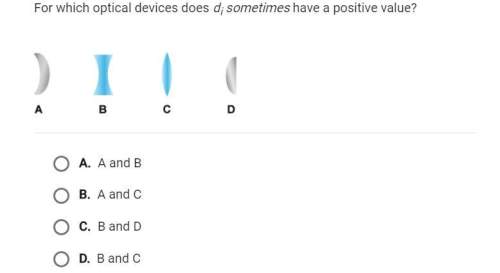Read this excerpt from "choreographers of matter, life, and intelligence."
but the few wondrou...

Physics, 05.07.2019 02:30 alexusjones6042
Read this excerpt from "choreographers of matter, life, and intelligence."
but the few wondrous shells and pebbles picked up by newton and other scientists on the seashore to trigger a marvelous chain of events. a profound transformation occurred in human society. with newton's mechanics came powerful machines, and eventually the steam engine, the motive force which reshaped the world by overturning agrarian society, spawning factories and stimulating commerce, unleashing the industrial revolution, and opening up entire continents with the railroad.
select the most accurate summary of kaku's argument.
a. newton's scientific study transformed knowledge of the ocean and encouraged countless transformative inventions.
b. newton's discoveries led to the invention of machines and the beginning of an industrialized society.
c. newton's invention of the steam engine revolutionized transportation around the world.
d. newton's followers invented the machines that later stimulated factory productivity and success.

Answers: 1


Another question on Physics

Physics, 21.06.2019 18:00
Which two objects have the greatest gravitational force acting between them
Answers: 1

Physics, 21.06.2019 21:10
Tafari worked one summer on a ship that set weather buoys in the ocean. he watched how one of the buoys moved in the water. describe which parts of the wave would cause the buoy to bob up and down. which wave property determined how fast the buoys bobbed in the water? he observed that when the wind blew harder, the ocean waves were larger, and the buoys moved away from the ship. what effect, if any, did the waves have on how far the buoys moved? explain your answer.
Answers: 3

Physics, 22.06.2019 00:30
What is relative velocity? in which condition is relative velocity known by adding the velocity of the first body and that of the second body
Answers: 1

Physics, 22.06.2019 01:10
Suppose that two tanks, 1 and 2, each with a large opening at the top, contain different liquids. a small hole is made in the side of each tank at the same depth 1.57 m below the liquid surface, but the hole in tank 2 has 2.49 times the cross-sectional area of the hole in tank 1. (a) what is the ratio ρ1/ρ2 of the densities of the liquids if the mass flow rate is the same for the two holes? (b) what is the ratio rv1/rv2 of the volume flow rates from the two tanks? (c) at one instant, the liquid in tank 1 is 14.9 cm above the hole. if the tanks are to have equal volume flow rates, what height above the hole must the liquid in tank 2 be just then?
Answers: 3
You know the right answer?
Questions



Health, 20.08.2020 18:01



Mathematics, 20.08.2020 18:01




Mathematics, 20.08.2020 18:01



Mathematics, 20.08.2020 18:01

Mathematics, 20.08.2020 18:01

History, 20.08.2020 18:01

Mathematics, 20.08.2020 18:01



Mathematics, 20.08.2020 18:01





